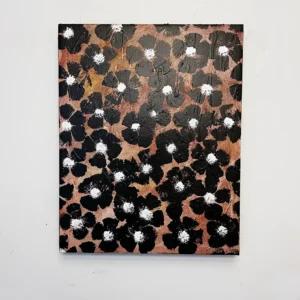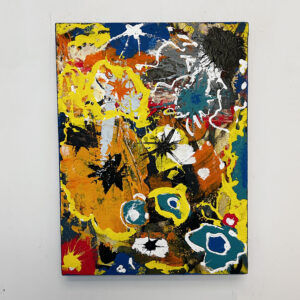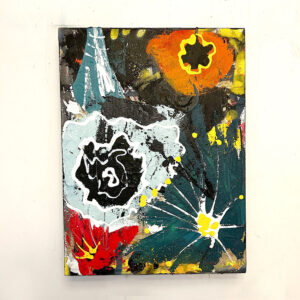Pittsburgh’s art scene thrives on collaboration and community, with numerous art collectives and collaborative spaces playing a pivotal role in fostering creativity. These groups and spaces provide essential support for artists, offering resources, networking opportunities, and a sense of belonging. In this article, we explore some of the most influential art collectives and collaborative spaces in Pittsburgh, their missions, and the impact they have on the city’s vibrant arts landscape.
The Importance of Art Collectives and Collaborative Spaces
Art collectives and collaborative spaces are crucial for nurturing artistic talent and fostering innovation. They create environments where artists can share ideas, collaborate on projects, and gain exposure to different perspectives and techniques. These spaces often provide resources such as studio space, equipment, and professional development opportunities that might be inaccessible to individual artists working alone.
In Pittsburgh, these collectives and spaces are particularly vital, given the city’s diverse and dynamic arts community. They help bridge the gap between emerging and established artists, encouraging mentorship and mutual support. Additionally, they often engage with the broader community, making art more accessible and inclusive.
Notable Art Collectives in Pittsburgh
Bunker Projects
Bunker Projects is a nonprofit artist residency program and experimental gallery space located in the Garfield neighborhood. Founded in 2013, Bunker Projects aims to support emerging artists by providing affordable studio space, exhibition opportunities, and professional development. The residency program allows artists to immerse themselves in their work, develop new projects, and engage with the local community through public events and exhibitions.
Bunker Projects is known for its commitment to contemporary and experimental art, offering a platform for innovative and unconventional works. The collective fosters a collaborative environment where artists can take risks and push the boundaries of their practice.
Radiant Hall
Radiant Hall is a nonprofit organization that operates multiple studio facilities across Pittsburgh, providing affordable and flexible workspaces for artists. Founded in 2012, Radiant Hall has expanded to include locations in Lawrenceville, Homewood, and the North Side. The organization supports a diverse community of artists working in various disciplines, from painting and sculpture to photography and digital media.
Radiant Hall’s mission is to create a sustainable environment for artists by offering not only studio space but also professional development and networking opportunities. The collective regularly hosts open studios, exhibitions, and workshops, fostering connections between artists and the broader community.
Boom Concepts
Boom Concepts is a creative hub and artist collective located in the Garfield neighborhood. Founded in 2014 by artists DS Kinsel and Thomas Agnew, Boom Concepts serves as a space for artists, musicians, and activists to collaborate, create, and share their work. The collective focuses on supporting artists from marginalized communities, particularly Black and LGBTQ+ artists.
Boom Concepts hosts a wide range of events, including art exhibitions, performances, workshops, and community discussions. The collective is dedicated to social justice and community empowerment, using art as a tool for advocacy and change.
Collaborative Spaces Fueling Pittsburgh’s Art Scene
The Mattress Factory
The Mattress Factory is a contemporary art museum and experimental lab for artists, located in Pittsburgh’s North Side. Since its founding in 1977, the Mattress Factory has been a pioneer in site-specific installations, providing artists with the space and resources to create immersive, large-scale works. The museum’s unique approach encourages artists to transform entire rooms, engaging viewers in interactive and sensory experiences.
The Mattress Factory supports collaboration by offering residency programs that bring artists from around the world to Pittsburgh. These residencies foster cross-cultural exchange and collaboration, enriching the local arts community with diverse perspectives and practices.
Union Project
Union Project is a nonprofit arts and community center located in the Highland Park neighborhood. Housed in a renovated historic church, Union Project offers affordable studio space, a ceramics cooperative, and event rental facilities. The organization’s mission is to use the arts to bridge gaps between communities, foster social change, and promote inclusive cultural engagement.
Union Project hosts a variety of programs, including art classes, exhibitions, and community events. The ceramics cooperative provides artists with access to studio space, kilns, and other equipment, while fostering a collaborative and supportive environment.
Artist Image Resource (AIR)
Artist Image Resource (AIR) is a printmaking and imaging studio located in the North Side. Founded in 1996, AIR provides artists with access to professional printmaking equipment, including screen printing, letterpress, and digital imaging tools. The studio supports artists at all levels of experience, offering workshops, residencies, and open studio sessions.
AIR’s collaborative approach encourages artists to experiment with printmaking techniques and engage in creative dialogue with peers. The organization also partners with local schools and community groups to provide educational programs and outreach, making printmaking accessible to a wider audience.
Impact on the Community
Art collectives and collaborative spaces in Pittsburgh have a significant impact on the local community, both culturally and economically. They contribute to the city’s cultural vibrancy by providing platforms for diverse artistic voices and fostering a sense of community among artists and residents. These spaces often serve as cultural hubs, hosting events that bring people together and promote dialogue and understanding.
Economically, these collectives and spaces support the local arts ecosystem by providing affordable resources and professional development opportunities for artists. They also attract visitors and tourists, contributing to the city’s economy and enhancing its reputation as a cultural destination.
Conclusion
Pittsburgh’s art collectives and collaborative spaces are essential to the city’s thriving arts scene. They provide artists with the support and resources needed to develop their practice, foster innovation, and engage with the community. By nurturing creativity and collaboration, these spaces contribute to Pittsburgh’s cultural richness and help build a more inclusive and vibrant city.
As Pittsburgh continues to evolve, the role of art collectives and collaborative spaces will remain crucial in shaping the city’s cultural landscape. Their commitment to supporting artists and fostering community ensures that Pittsburgh’s arts scene will continue to flourish, offering inspiration and opportunities for generations to come.


